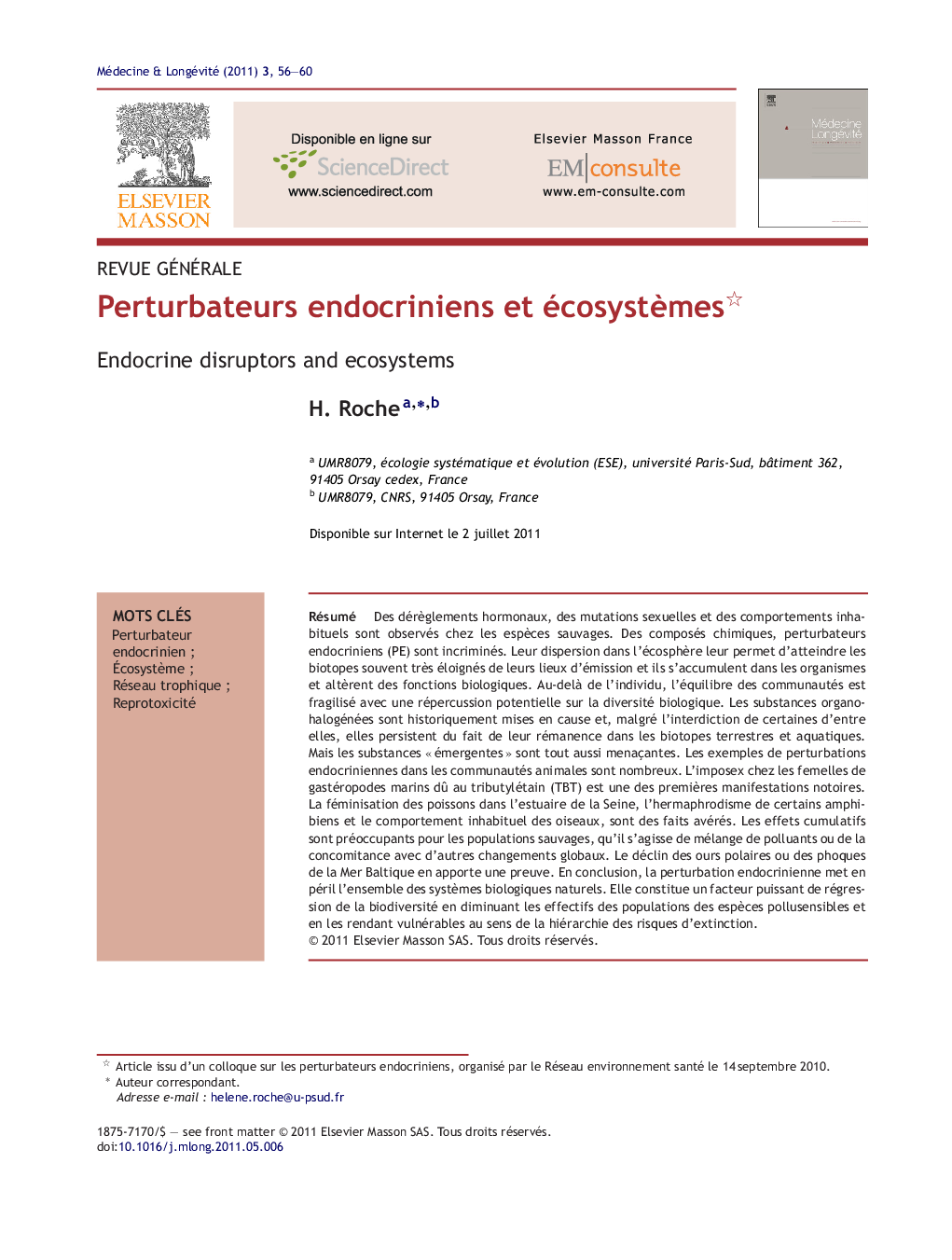| Article ID | Journal | Published Year | Pages | File Type |
|---|---|---|---|---|
| 1920138 | Médecine & Longévité | 2011 | 5 Pages |
Abstract
Hormonal imbalances, sexual changes and unusual behaviours are observed in wildlife. Some chemicals are implicated as endocrine disruptors (EDCs). Their dispersal into ecosphere allows them to reach biotopes isolated of emission sources and they accumulate in organisms and they cause alterations in biological functions (reprotoxicity, immunotoxicity, etc.). Beyond the individual, the community equilibrium is endangered with a potential impact on biodiversity. The organohalogen substances are historically concerned. Despite the prohibition of organochlorine pesticides and PCBs, they persist in aquatic and terrestrial habitats. But the “emerging substances” are also dangerous. Numerous examples of endocrine disruption in animal communities are described. The imposex in female of marine gastropods related to tributyltin (TBT) is one of the earliest known events. The feminization of fish in the estuary of the Seine, the hermaphroditism of some amphibians and the strange behaviour of birds, are famous facts. The cumulative effects are of concern to wild populations. These are mix of pollutants or the concomitancy of other global changes, the decline of polar bears or seals from the Baltic Sea proves it. In conclusion, endocrine disruption jeopardizes all natural biological systems and contributes in loss of biological diversity by reducing the number of sensitive species and making them vulnerable, considering the global extinction risk.
Related Topics
Life Sciences
Biochemistry, Genetics and Molecular Biology
Ageing
Authors
H. Roche,
